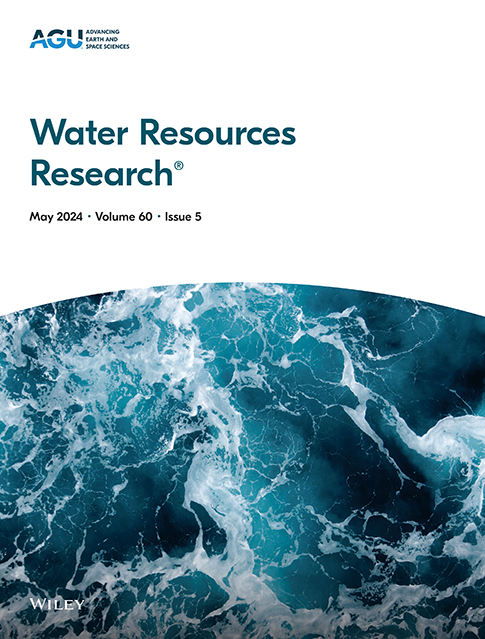Enhancing Aquifer Characterization With Position-Encoded Hyperparameters: A Novel ES-SIFG Approach
IF 5
1区 地球科学
Q2 ENVIRONMENTAL SCIENCES
引用次数: 0
Abstract
To accurately predict groundwater flow and solute transport, it is essential to precisely characterize the highly heterogeneous aquifer conditions. Ensemble smoother with multiple data assimilation (ESMDA), though widely applied to identify aquifer properties and spatial features, encounters severe problems in practice due its fundamental assumptions of linearity and Gaussianity. To tackle this challenge, we first use a spatially-informed field generator (SIFG) to hyperparameterize the conductivity field and encode position information into the hyperparameters, and then combine it with ensemble smoother to form a new inversion framework called ensemble smoother with SIFG (ES-SIFG). In ES-SIFG, followed by utilizing an ensemble smoother to update the hyperparameters rather than the aquifer parameters. The main innovation of ES-SIFG is integrating positional information into hyperparameters, enabling the use of distance-based covariance localization (CL) and significantly reducing the number of model simulations. The proposed method has been tested on parameter identification problems in 2-D and 3-D non-Gaussian aquifers and compared to ESMDA with normal score transformation. Results indicate that ES-SIFG outperforms ESMDA and is capable of accurately identifying non-Gaussian aquifer parameters and reconstructing contaminant release history, particularly in resolving equifinality and preserving prior geological structure. Furthermore, SIFG allows usage of CL between hyperparameters and observations, which ensures the stable convergence of data assimilation processes even with very small ensemble sizes.用位置编码的超参数增强含水层表征:一种新的ES-SIFG方法
为了准确地预测地下水流动和溶质运移,必须精确地描述高度非均匀的含水层条件。多重数据同化集成平滑法(ESMDA)被广泛应用于识别含水层性质和空间特征,但由于其基本假设是线性和高斯性,在实际应用中遇到了严重的问题。为了解决这一挑战,我们首先使用空间信息场发生器(SIFG)对电导率场进行超参数化,并将位置信息编码到超参数中,然后将其与集成平滑器结合,形成一个新的反演框架,称为SIFG集成平滑器(ES-SIFG)。在ES-SIFG中,随后利用集成平滑器更新超参数而不是含水层参数。ES-SIFG的主要创新是将位置信息集成到超参数中,从而能够使用基于距离的协方差定位(CL),并显着减少模型模拟的次数。在二维和三维非高斯含水层参数识别问题上进行了测试,并与正态分数变换的ESMDA进行了比较。结果表明,ES-SIFG优于ESMDA,能够准确识别非高斯含水层参数并重建污染物释放历史,特别是在解决不确定性和保留先前的地质结构方面。此外,SIFG允许在超参数和观测值之间使用CL,即使在很小的集合大小下也能确保数据同化过程的稳定收敛。
本文章由计算机程序翻译,如有差异,请以英文原文为准。
求助全文
约1分钟内获得全文
求助全文
来源期刊

Water Resources Research
环境科学-湖沼学
CiteScore
8.80
自引率
13.00%
发文量
599
审稿时长
3.5 months
期刊介绍:
Water Resources Research (WRR) is an interdisciplinary journal that focuses on hydrology and water resources. It publishes original research in the natural and social sciences of water. It emphasizes the role of water in the Earth system, including physical, chemical, biological, and ecological processes in water resources research and management, including social, policy, and public health implications. It encompasses observational, experimental, theoretical, analytical, numerical, and data-driven approaches that advance the science of water and its management. Submissions are evaluated for their novelty, accuracy, significance, and broader implications of the findings.
 求助内容:
求助内容: 应助结果提醒方式:
应助结果提醒方式:


